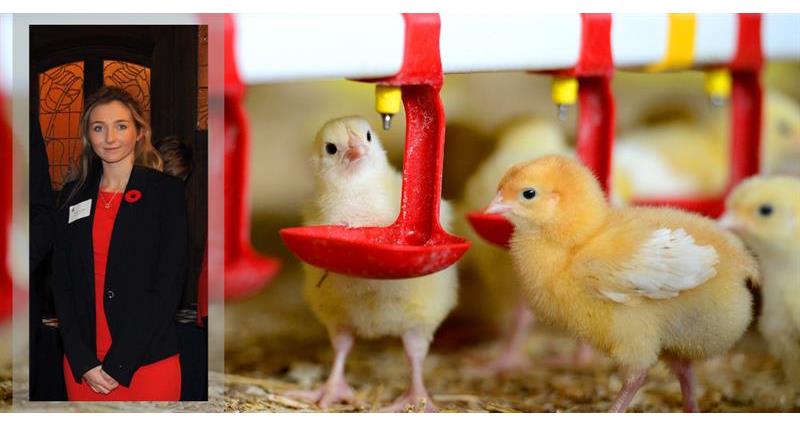Blockchain is an online database, allowing data and information to be shared across the supply chain, in real time.
It has the potential to reduce costs for farmers and the agri-food chain through streamlining food chain information, amongst other benefits. It could also increase transparency and trust for consumers through improvements in traceability. However, there is very little research which proves the concept. Sophie therefore researched some of the advantages and disadvantages of implementing Blockchain, focusing particular within the poultry sector.
Sophie conducted a range of research, from questions, to face to face interviews with key supply chain businesses. She found that of the participants interviewed, 65% had not heard of Blockchain technology in their job role. Of those who did; she found the highest ranking advantage to the industry was improvements to traceability. However, a key challenge was the lack of knowledge and understanding , with few really understanding how the digital system works.
Other key highlights Sophie found include;
Advantages:
- Making better use of data and supply chain insights from farm level through to retail. For example improvements in data collection of antibiotic usage and more in depth detailed understanding of the reasons for use could drive improvements in animal health. Through better use of data analysis, the agri-food sector could drive out costs and make the supply chain more efficient.
- Tamper proof data, uploaded onto the system creates integrity and builds trust. The technology also has the ability to time stamp automatically uploaded data, further improving authenticity. For example, scanning cattle EID tags, could save time and reduce paperwork, but also improve transparency of cattle movements. However, if data is manually inputted, this could also be a disadvantage as the data is only as accurate as what is being inputted.
- Blockchain has the ability to improve traceability for consumers. Consumers could scan a QR code on the product, which reveals information from farm to fork. This would be at the discretion of the owners of the Blockchain to decide what consumers see, so for example farmers could allow consumer to see information about breed of the animal, or the region where the animal was from but not the exact location of the farm.
Disadvantages:
- It is not clear how much the Blockchain technology actually costs. This would be something which would need to be looked into.
- Understanding the value of the data and who owns the data. It was unclear if farmers would own their own data, or if when it is uploaded onto the system, the wider supply chain or retailer owns it. Data also has monetary value, but it is not clear if in exchange for it, would it have a positive effect to farm gate prices. Sophie found through her research that those who she interviewed within the supply chain couldn’t be sure of who owns the data. The retailer, processor and farmer all wanted to own it.
Some businesses, including retailers and processors are already trialling the technology in the UK. This is a good opportunity for farmers to engage with their supply chain as the technology develops. Farmers have a great story to tell consumers and, through the use of Blockchain, could further enhance consumers trust in British food and farming.
Are you a student completing a supply-chain related dissertation project? Would you like to win £150, and gain access to a range of industry contacts? You can download an application form and apply here
More...
